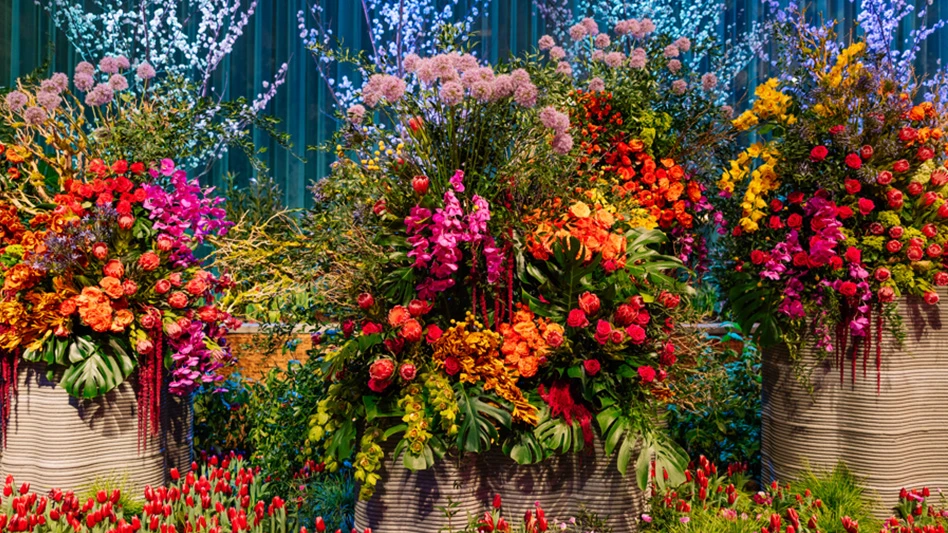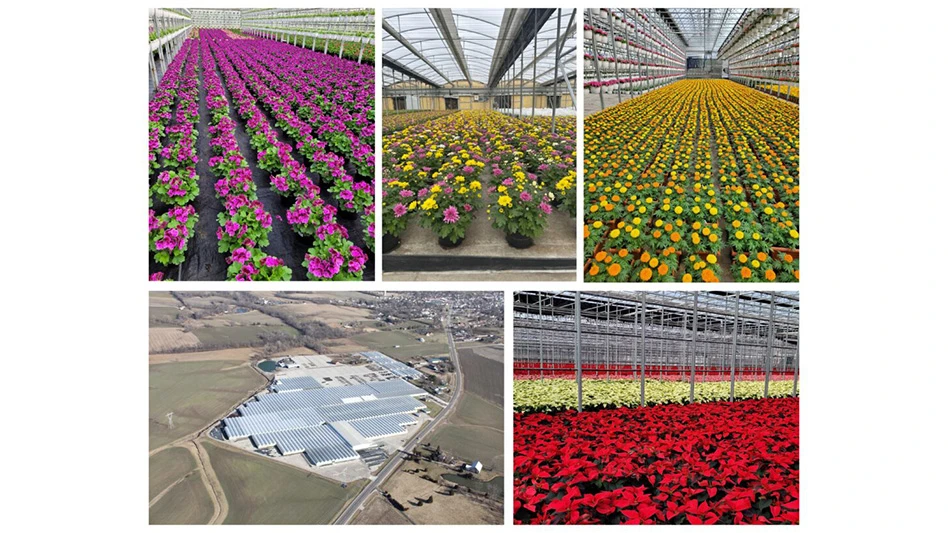
Growing up on an eighth of an acre in New Jersey, Justin Lombardoni wasn’t surrounded by plants at an early age like many aspiring young horticulturalists. It wasn’t until middle school, when he stumbled upon a neighbor’s seed catalog, that he discovered his fascination with flora. Before long, he was starting his own seeds and germinating all sorts of annuals and perennials to fill his small yard with as many plants as possible.
By the time he got to high school, Lombardoni knew he wanted to pursue a horticulture career. He earned a bachelor’s degree in plant science from Cornell University in 2016, followed by a doctorate in plant breeding and genomics from Rutgers University in 2022.
“While I was in grad school, I was so focused on lab work that I hardly ever got to work with plants,” says Lombardoni, who currently serves as president of the northern region of the American Society for Horticultural Science. Then, fresh out of grad school, he landed his dream job at the Chicago Botanic Garden as an ornamental plant breeder. Now, after nearly a decade of lab work dealing with hazelnut genetics, Lombardoni is happy to be surrounded by flowering plants again.

Breeding desirable traits
Lombardoni relies on traditional breeding methods at the Chicago Botanic Garden, where he hand-crosses plants when possible and sometimes resorts to open pollination. To supplement these traditional breeding methods, Lombardoni is also experimenting with chemical mutagenesis to introduce new variations into the program, which works exclusively with herbaceous perennials.

“The goals of the breeding program are fairly traditional, as well,” he says. “We’re looking for any desirable traits that differentiate a selection from cultivars that are already on the market — whether that’s a different size or growing habit; a cool leaf variegation; larger, more abundant flowers; or, of course, new flower colors worthy of new cultivars.”
Most importantly, new plants must demonstrate winter hardiness and adaptability to survive the harsh seasons of Midwestern gardens. To that end, Lombardoni partners closely with the botanic garden’s Plant Evaluation Program, which formally studies new cultivars. Plants that pass evaluation are ultimately released through the Chicagoland Grows Plant Introduction Program, a unique partnership among the Chicago Botanic Garden (which develops herbaceous perennials), the nearby Morton Arboretum (which focuses on woody ornamentals) and the Ornamental Growers Association of Northern Illinois.
“This is the only breeding program at a botanic garden that I know of in the country,” Lombardoni says. “Some may have someone who dabbles in breeding, but we have a breeder and an introduction program with consistent introductions, so we’re kind of unique.”
Finding a new focus
Since stepping into his role in May 2022, Lombardoni has continued some of the work started by the garden’s previous breeder involving genera such as Amsonia (bluestar), Panicum (switchgrass), Vernonia (ironweed) and Baptisia (blue wild indigo). He has already helped introduce several of his predecessor’s cultivars, including the supersized Amsonia ‘Blue Behemoth’ and the late-blooming Baptisia ‘Last Dance’.
Because it can take several years to get from an initial cross to an introduction, Lombardoni is still finding his own focus within the breeding program. For example, he made his first Panicum cross in late 2022. The seed was stratified and germinated in the greenhouse the following spring, and by the summer of 2023 — one year after the initial cross — Lombardoni started making selections. “I eliminate, on average, about half of the progeny at that point,” he says. “One of the best traits a breeder can have is the ability to cull and get rid of things.”
After overwintering, he planted his surviving selections in the program’s outdoor breeding beds, which cover a quarter-acre in total. He’ll continue to observe his crosses over the next year and make another round of selections in 2025. “You’re continually culling a few more each year, and then once you’re sure it’s hardy enough to overwinter, you need to give it a few years of propagating to make sure that each one looks uniform,” he says. “It’s a long-term process.”

Introducing new varieties
While the specifics of his breeding focus are still taking shape, Lombardoni says his goal is to “introduce cultivars from less prominent genera to increase the variety of what we see in a typical garden.”
Of course, that focus comes with frustrations — like the mechanics of actually making crosses manually, which can be tedious and time-consuming. Plus, because he’s working with less common genera, the lack of genetic research can be another challenge.
But those hurdles can’t hold Lombardoni back from “the excitement of breeding something new, something attractive enough for someone to choose for their garden,” he says. “Of the thousands of cultivars that are available across different genera and species, the possibility of somebody choosing your cultivar is really exciting, and that’s what drives me.”

Explore the July 2024 Issue
Check out more from this issue and find your next story to read.
Latest from Greenhouse Management
- GIE Media Horticulture Group wins five regional 2025 Azbee Awards of Excellence
- Terra Nova Nurseries introduces rust-free and disease-resistant heucherella
- John T. Nickel, founder of Greenleaf Nursery Co., passes away at 89
- Three tours offered at 2025 Farwest Show
- Garden Media Group announces sixth annual Women in Horticulture Week
- Star Roses and Plants announces National Knock Out Rose Day
- The Growth Industry Episode 4: How federal budget cuts are affecting horticulture nonprofits
- Green Gear: Greenhouse tech for predicting weather and nutrient analysis





